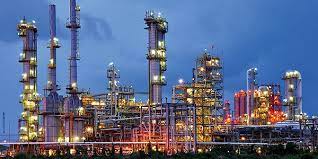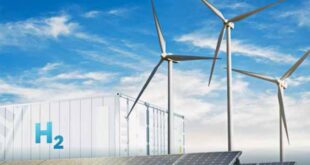Last year, Bloomberg caused quite a stir in energy circles when it predicted that global demand for road fuel will peak in 2027. According to Bloomberg, demand for road fuel will hit an all-time high of 49 million barrels per day just three years from now before entering terminal decline. Bloomberg says that rapid adoption of electric vehicles, shared mobility and ever-improving fuel efficiency are the biggest bear catalysts for oil, with EVs expected to displace a staggering 20 million barrels per day in oil demand by 2040, or 10x the current estimate.
Bloomberg also reported that demand for gasoline and diesel for road transport has already peaked in the U.S. and Europe, and is set to do so in China in the current year. Meanwhile, demand in India will start shrinking in the 2030s.
Well, we have just completed the first quarter of 2024 and all eyes are on the world’s biggest consumer of fossil fuels: China. Chinese crude oil imports jumped by 5.1% Y/Y in January and February, driven by increasing fuel demand during the Lunar New Year holiday. According to Reuters’ calculations based on data reported by the Chinese General Administration of Customs. China’s oil cargo arrivals climbed to a total of 10.74 million barrels per day (bpd) in the first two months of 2024, compared to 10.4 million bpd in last year’s corresponding period. However, the Jan-Feb clip represents a considerable slowdown from 11.39 million bpd crude arrivals in December 2023. It’s hard to predict how demand will unfold in the coming months although Chinese refiners, in recent years, have stepped up purchases when prices are relatively low and pumped the brakes when oil climbs above $80 per barrel.
China’s oil market is closely watched by energy experts not only due to its sheer size but also because of the ongoing EV revolution in the Middle Kingdom. According to Lu Ruquan, president of state-owned China National Petroleum Corp.’s Economics & Technology Research Institute, EVs will displace more than 20 million metric tons of crude demand this year, good for 10% of the country’s gasoline and diesel consumption. China’s sales of battery-powered EVs rose 18.2% in January-February, a lower growth clip compared to 20.8% for all of 2023. However, together with plug-in hybrids, China’s new energy vehicle (NEV) sales jumped 37.5% in the two-month period, versus 36.2% for 2023. NEVs accounted for 33.5% of total car sales in January-February versus 28.3% in the same period a year earlier. Further, intense price wars have led to some EVs achieving price parity with ICE vehicles sooner than projected, putting further pressure on oil demand.
Thankfully for the oil bulls, China’s EV boom might not be enough to destroy oil demand growth due to another boom in a pivotal oil industry: petrochemicals. China’s oil demand is expected to continue growing in the coming years mainly because the country is aggressively onshoring its petrochemicals sector, displacing demand that was previously served by imports from Japan, Europe, South Korea and the Persian Gulf. A new breed of private refiners such as Hengli Petrochemical and Rongsheng Petrochemical has emerged in China, and they are spending billions of dollars building plants specializing in chemicals, rather than gasoline and diesel. Indeed, the International Energy Agency has reported that 90% of China’s increased oil demand from 2021 to 2024 comes from chemical feedstocks like LPG, ethane, and naphtha. IEA notes that between 2019 and 2024, additional Chinese production capacity for ethylene and propylene will exceed the combined current capacities of Europe, Japan, and South Korea. Between 2018 and 2023, China’s output of synthetic fibers alone rose by 21 million metric tons–enough to spin more than 100 billion T-shirts a year.
Analysts have noted that this transition towards petrochemicals may have significant climate implications, and could potentially lead to a significant decline in emissions. Whereas petroleum fuels must be burned to be used, instantly putting emissions into the atmosphere, petrochemicals tend to keep their carbon locked up in their molecular structures and can be easily recycled.
Buttressing the bullish thesis, China’s economy has kicked off the current year on a bright note, with manufacturing and service sectors recording positive growth. The Caixin/S&P Global China manufacturing purchasing managers’ index clocked in at 51.1 in March— its strongest since February 2023 — after coming in at 50.9 in February. Economists had expected the reading to hit 51, according to a Reuters poll. The 50-point mark separates expansion from contraction.

 Iran Energy News Oil, Gas, Petrochemical and Energy Field Specialized Channel
Iran Energy News Oil, Gas, Petrochemical and Energy Field Specialized Channel



